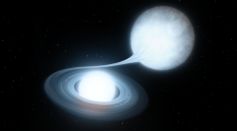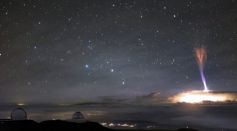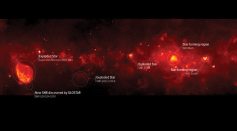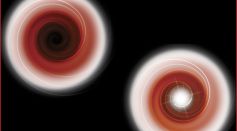Tags: Astronomy

Planet Nine Lurking Near Sun’s Orbit? Scientists Spot Planet Around Solar System
Comet ATLAS: This Cosmic Flop Might Have Been a Spectacular Sight to Civilizations
Over 100 Trillion Objects at the Oort Cloud Icy Edge of the Solar System Are From Interstellar Space Like Comet 2I/Borisov
Solar Radiation Greatly Affects Small Moon Iron Nanoparticles; Here Is What It Means
Morning Star Greets Earth With Love: When to Spot Venus in 2021
Durham University Researchers Unveil Photo of Galaxies in Ultra-High Definition

Did NASA Just Find Milky Way’s Broken Arm? Scientists Claim Seeing a Cluster of Nebulae, Young Stars in the Galaxy
Several Solar Systems Are Facing Radioactive Decay, Another Mysterious Process Like in Ours
Newly Discovered Red Giant Stars Can Be Used for Exceptional Detailed Research Through Ground-Based Telescope

This Supernova Shrapnel Star Is Running Away From The Galaxy, 2M Miles an Hour

Dancing Ghosts: Astronomers Found Strange Clouds Dancing in the Universe

Celestial Events to Keep an Eye for the Month of August 2021: Comets, Asteroids, and More!

Astronomical Events August 2021: What to Watch Out Next Month

Previously Unseen Star Formation in Milky Way Detected in New Study
Comet ATLAS: What Happened to Its Tail Now That It's No Longer Tailing Anything?

Event Horizon Telescope Detects Strong Astrophysical Jet From Black Hole; What Is It Trying To Tell?

Scientists Discover Massive Galactic Structure in Space by Accident
Death of a Star Unveils 13-Billion-Year Space Mystery

Hubble Space Telescope Captures 2 Giant Galaxies in Perseus Cluster
Are Black Holes Slowly Taking Over Star Cluster Palomar 5 Orbiting Milky Way Galaxy?
Most Popular

Recycling Myths vs Facts: What Actually Gets Recycled and How to Do It Right

Allergies Explained: What Happens in Your Body During an Allergic Reaction

What Is Conservation Biology? Key Strategies to Protect Species and Habitats

Types of Pollution: Air, Water, Soil, Noise, and Their Health Effects




